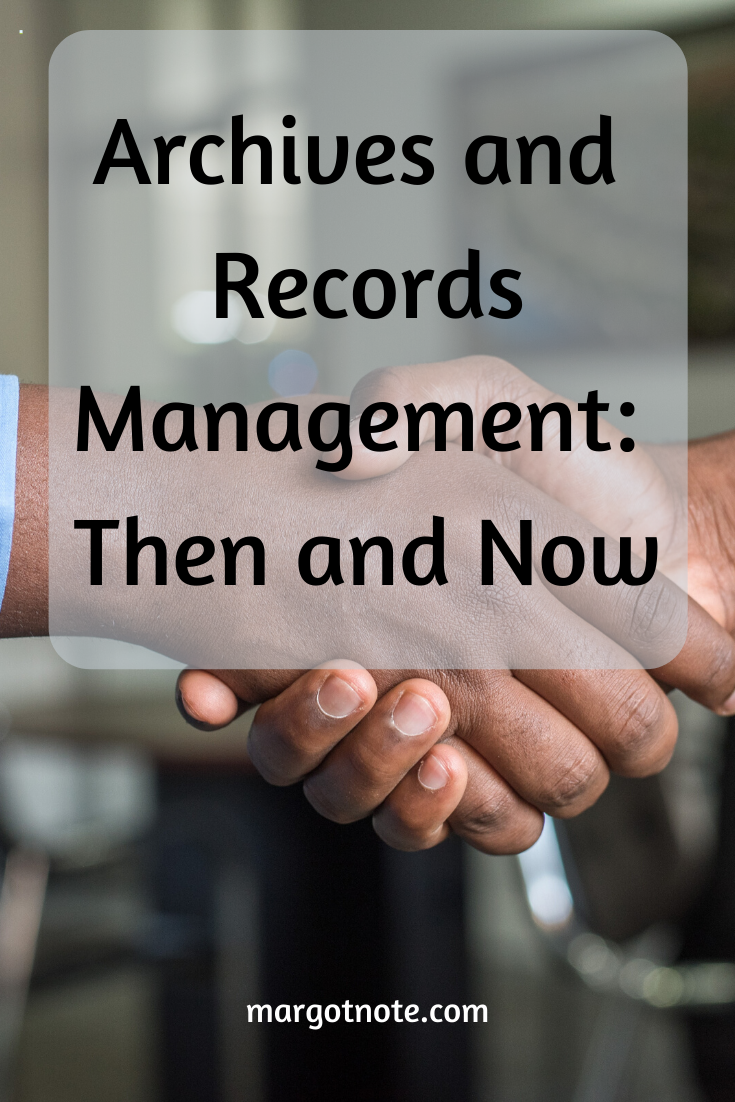Archival management originated in the 1930s with the establishment of the National Archives and the Society for American Archivists, as well as the Historical Records Survey (HRS) of the Works Progress Administration (WPA).
The subsequent evolvement of records management as a specialized enterprise occurred in the 1950s. The expanse of governmental activity and its subsequent records spurred a need to reduce the number of records while retaining the quality of records of enduring value.
Records Scheduling Defined
Records scheduling identifies and describes records, usually at the series level, and provides information on their retention periods, which differ depending on their nature and origination. Records schedules offer mandatory instructions for disposition, which may include the transfer of permanent records to an archives or the destruction of temporary records. Archives acquire records after their initial purpose—what archivist T. R. Schellenberg called “primary values”—is complete. Records are retained because of their continuing informational, evidential, and intrinsic values.
Both archivists and records managers share the primary tasks of the efficient, systematic arrangement, description, and preservation of documents for future retrieval and reference. The professions of archives and records management meet at records scheduling, because consistent standards for the transfer of records from an organization to an archives create better, representative collections. Archivists have discovered that traditional or analog-based records scheduling and accessioning methods have not proved effective with born-digital records. A current challenge in archives and records management is the development of new skills to expedite the transfer of digital files and to evaluate file format longevity and authenticity.
Enter the Digital Age
How is the relationship between archives and records management changing in the digital age? The traditional concept of the life cycle of records will change when archivists and records managers work with digital records.
Records management traditionally is explained as a life cycle, with the end being the disposal of records or the transfer of the records to the archives, where it has another life cycle. The continuum model emphasizes that as records end up in archives, record managers should have responsibilities in deciding what is preserved for posterity. Collaboration is best viewed as a continuum, involving working together, iterative adjustment, and information exchange for the mutual benefit of archivists and records managers. The form of collaboration can change depending on circumstances, and it, therefore, implies a set of relationships, rather than one relationship.
The life cycle model is difficult to apply to electronic data because its stages cannot be separated. Creation with digital records is ongoing, then altered many times. Additionally, database management systems separate elements of a record, which can be manipulated. Schedules also become continuous because data is created and re-created.
The Continuum Model
The split between archivists and records management in the life cycle model may be too defined. Instead, a four-stage continuum may be more accurate. These stages include the creation and receipt of a record, classification within the existing system, scheduling of information, and the maintenance and use of the information.
All record stages are interrelated, forming a significant overlap in which both records managers and archivists are involved, to varying degrees, in the ongoing management of information. The lifecycle stages that records underwent were, in fact, a series of recurring activities performed by archivists and records managers. The underlying unifying or linking factor in the continuum was the service function to the records’ creators and all users.
A Lasting Relationship
In an environment where organizational hierarchies are being eliminated, and electronic record-keeping systems are becoming dominant, archivists and records managers will continue to work together. An effective record-keeping program, to provide a comprehensive account of an organization’s activities and structure, must be designed and implemented by professional archivists and records managers. The archives program must be highly placed, visible, and accessible—and initiative-taking.
The blog was originally published on Lucidea's blog.































